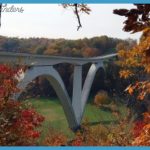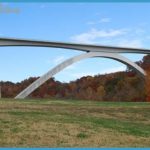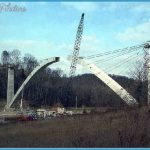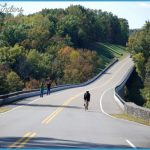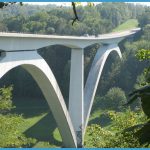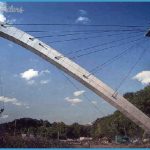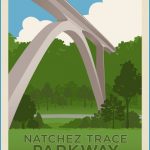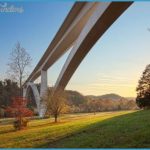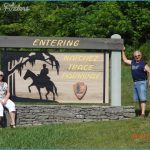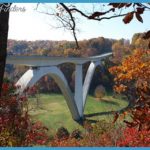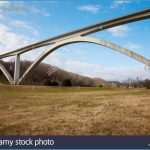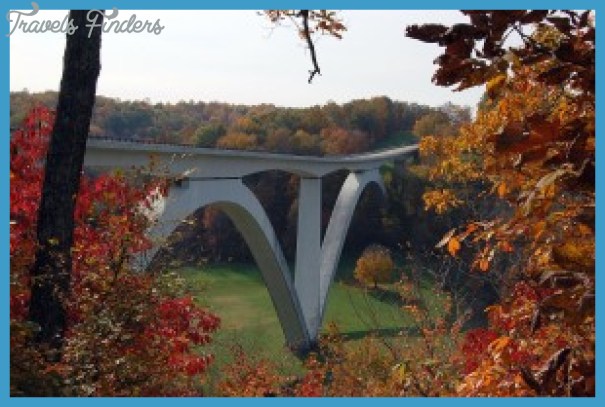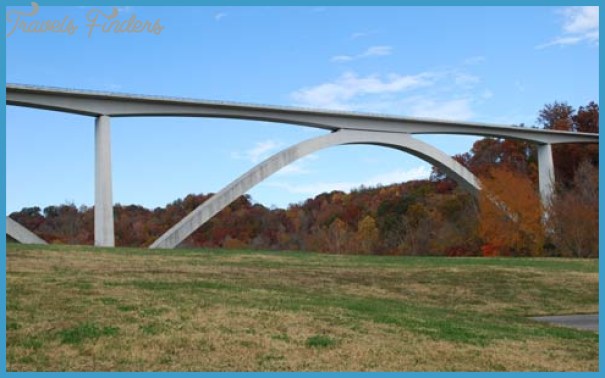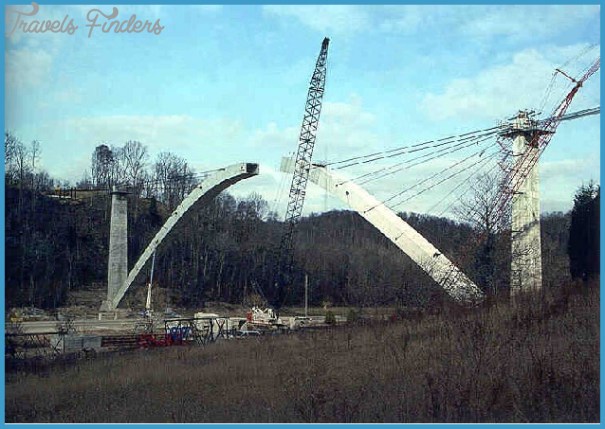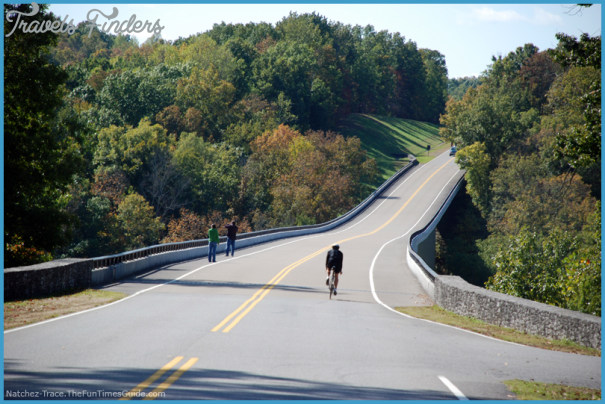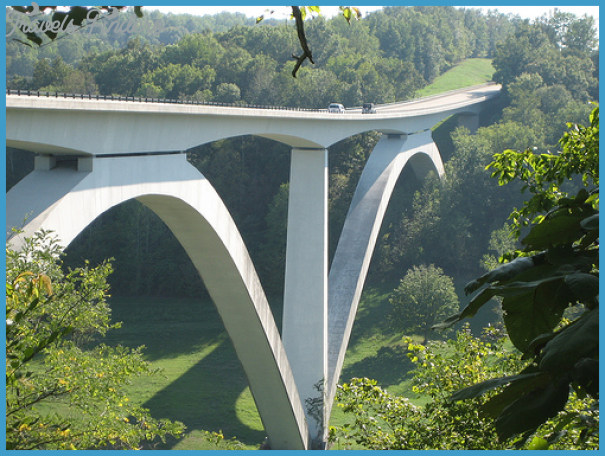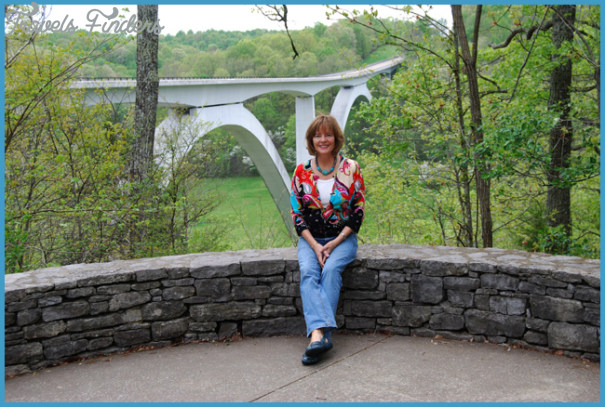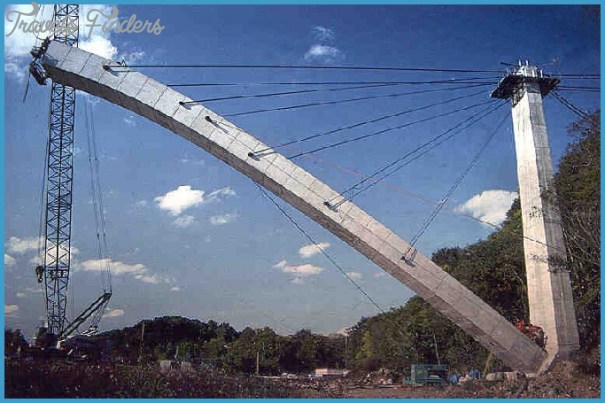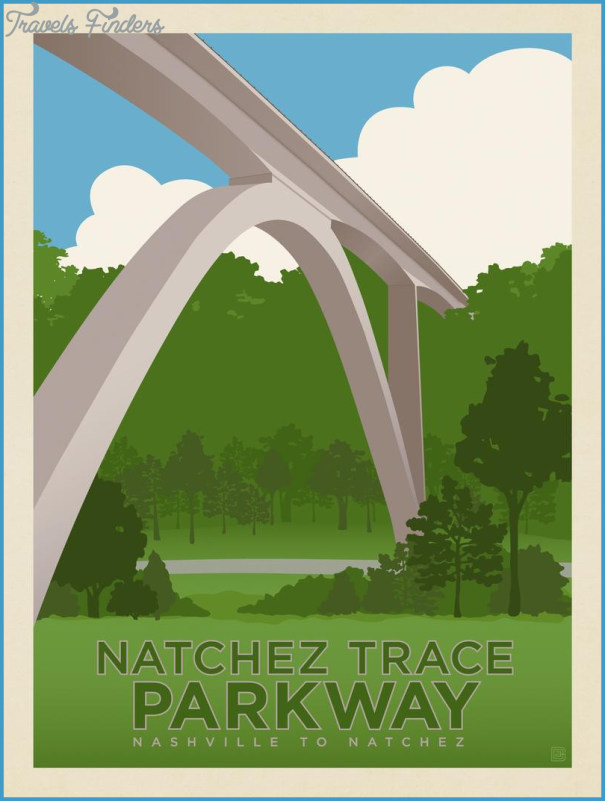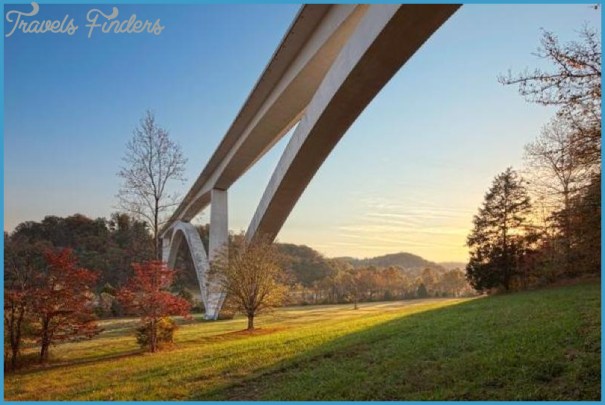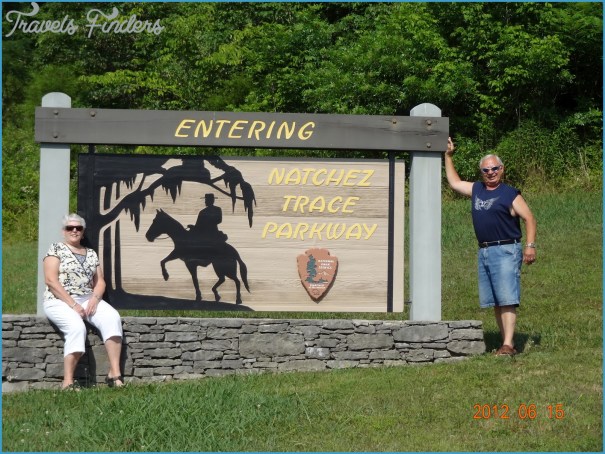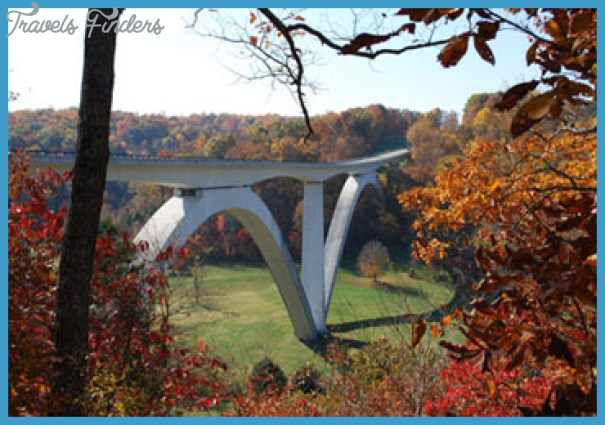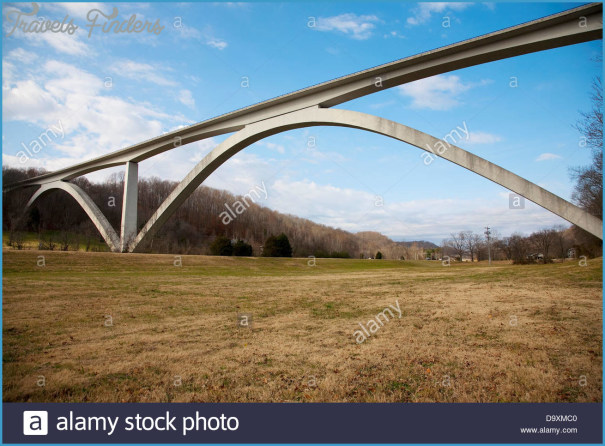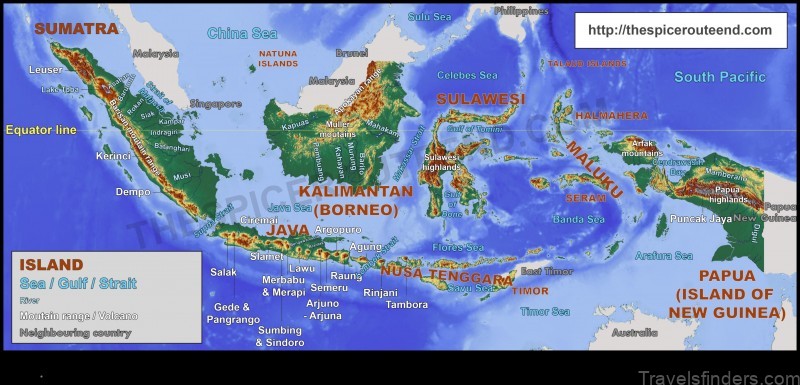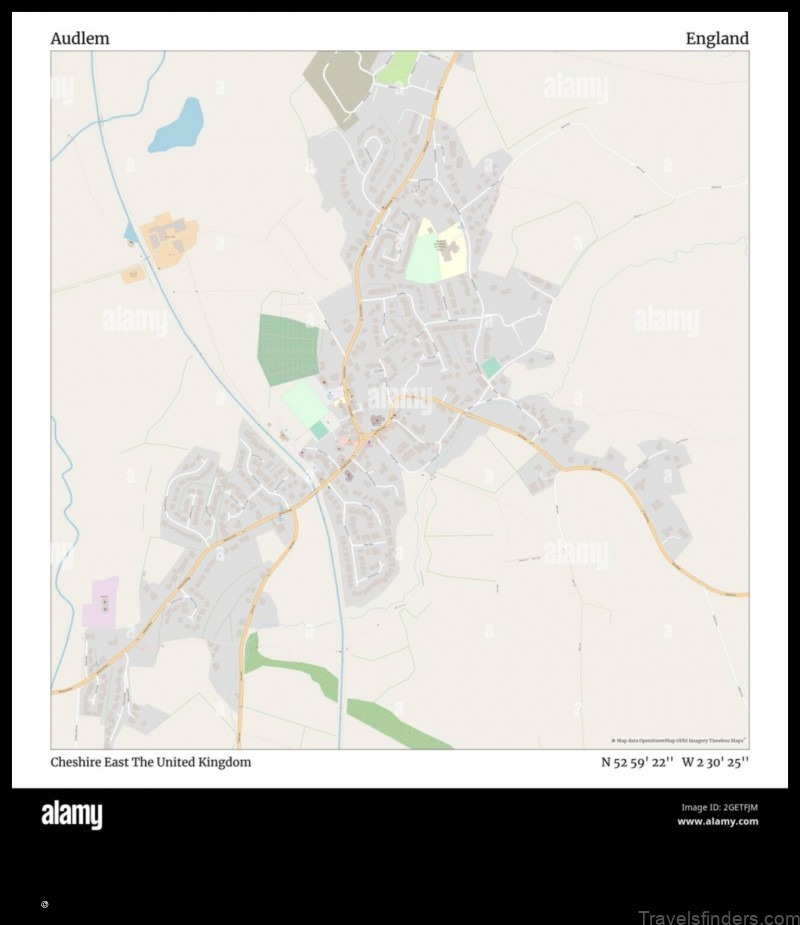NATCHEZ TRACE PARKWAY ARCHES
From wilderness trail to modern parkway, the historic Natchez Trace has witnessed a colorful procession of humanity over the centuries. Hernando de Soto, Andrew Jackson, Meriwether Lewis, and Ulysses S. Grant are some who traveled the Natchez Trace, or trail, between Tennessee and Mississippi. The 450-mile (724-kilometer)-long path, carved through the woodlands centuries earlier by the Natchez, Choctaw, and Chickasaw tribes, was a key military and trade route until the mid-eighteenth century, when it was largely abandoned. Plans to transform the historic trail into a two-lane parkway began in the 1930s.
The National Park Service (NPS), which maintains the Natchez Trace Parkway, and the Federal Highway Administration (FHA) needed a crossing over Route 96 near Franklin, Tennessee, to complete the parkway. To preserve the area’s character and natural beauty, they wanted a minimal, elegant structure. In response, FIGG Bridge Group designed the Natchez Trace Parkway Arches, a trailblazer in its own right. The environment called for a bridge with curved and slender shapes. We made our best effort to provide a signature precast concrete bridge for the Natchez Trace.
NATCHEZ TRACE PARKWAY ARCHES Photo Gallery
For the first time, precast concrete segmental technology was used for an arched structure in the United States. The double arches and the roadway were constructed of precast box girder segments, while the three piers and their foundations were cast in place. The roadway is borne on two arches. The first arch is symmetrical, with a span of 582 feet (177 meters) that towers 155 feet (47 meters) over the highway; the second is asymmetrical, to accommodate the terrain’s topography, with a span of 462 feet (141 meters) and a rise of 102 feet (31 meters). Depths of the precast box girder superstructure vary from 7.5 feet (2.3 meters) at midspan to 14.3 feet (4.4 meters) at the piers.
Typically, the superstructure of an arch bridge is supported by a number of evenly spaced vertical members called spandrels that distribute the weight of the superstructure on the arch. To create a lighter, more open structure, and one that would minimize the bridge’s visual impact on the surrounding woodlands, the spandrels were omitted. This put an unusual load on the arch crowns. To accommodate the load, FIGG increased the depth of the concrete boxes that form the arches from 10 feet (3.0 meters) to 13 feet (4.0 meters) as they approach the top of the arch and decreased back to 10 feet at the center of the arch.
Although precast concrete bridges emerged in post-World War II Europe as a quick, utilitarian means of replacing bombed-out bridges, the Natchez Trace Parkway Arches expanded the aesthetic and environmental possibilities of precast segmental construction. To date, the span has received sixteen awards for its exemplary design, including a 1995 Presidential Award for Design Excellence.
Visually, the bridge seems to leap through the woodlands with the speed and elegance of a greyhound. Constructed with an economy of materials and means, and with extraordinary sensitivity to both history and nature, the Natchez Trace Parkway Arches tread lightly indeed.
The arches are formed of hollow concrete segments threaded together with posttensioning steel that was then anchored at the end of each span. Temporary cables strung from the pier held each block in place until each arch was closed.
WaterFire, a multimedia piece by Barnaby Evans, celebrates the waterfront’s rebirth. The first installation in 1994 featured eleven crackling wood fires in braziers mounted on the remnants of the Crawford Street Bridge. WaterFire now features eighty braziers that are lit about fifteen times a year, attracting nearly a million visitors.

